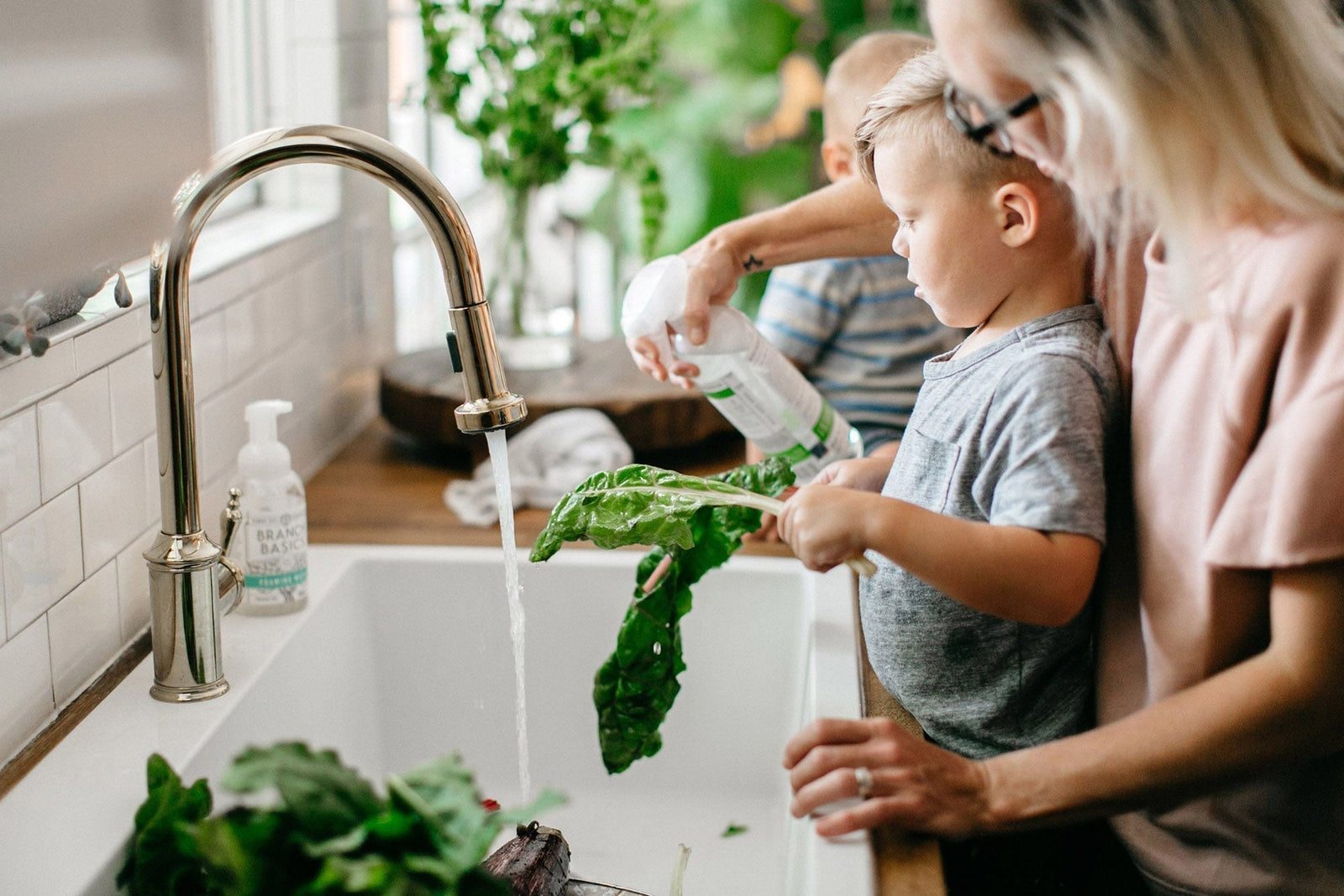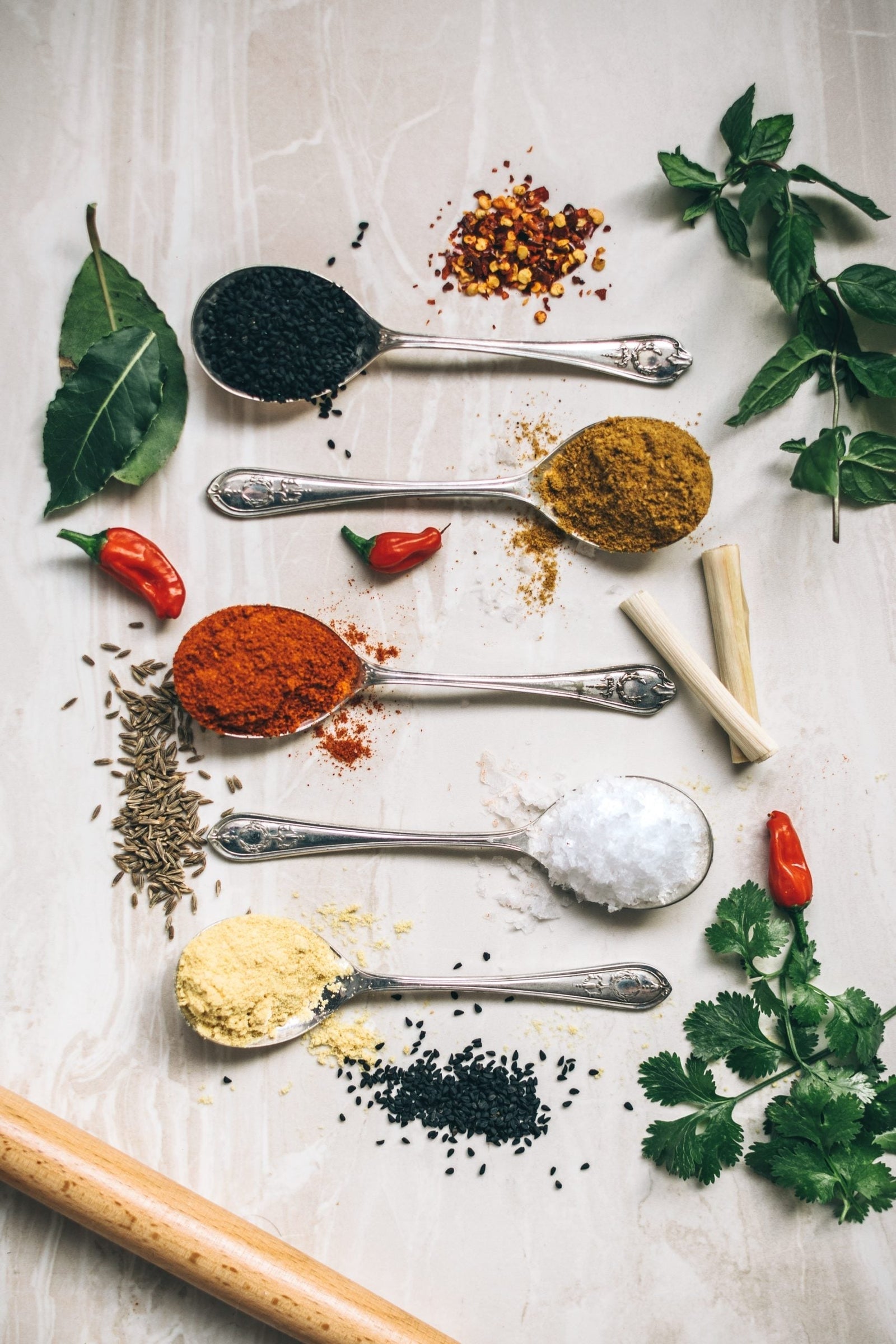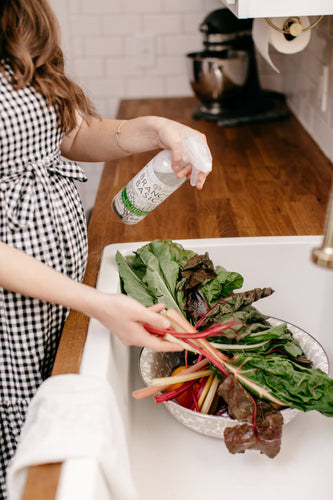Protein-Packed, Nutrient Dense Snacks: The Ultimate Healthy Guide

It's snack time! For some of us, the struggle is real. In the name of convenience or in hopes of avoiding a tantrum, our healthy efforts can easily be pushed to the wayside.
Thankfully, there are plenty of great snack options - even processed ones that are made with real food, healthy ingredients.
We put together a list of our favorite go-to healthy snacks to equip you for every situation.
Why Conventional Snacks Are Bad For You
Conventional snacks tend to be loaded with all sorts of refined sugar, preservatives, excitotoxins (see below), dyes and flavorings, unhealthy oils, etc., making them more like a nutrient-devoid and health-robbing dessert.
These additives affect our children’s moods, behavior, and cognitive function. Studies show that children concentrate, follow instructions, remember more, and behave better when they eat healthier food.
So even if it’s a “little snack” between healthier meals, it matters, and unhealthy ingredients only serve to undermine our children’s growing brains and bodies.
And our giving in could simply be kicking the can down the road, because many conventional snacks, for instance, contain excitotoxins which are flavor-enhancing ingredients that literally stimulate neurons to death.
According to Russell Blaylock, MD, exposure to excitotoxins may set children up for learning or emotional difficulties, can damage the part of their brain known to control hormones and lead to endocrine problems later, amongst other effects.
Instead, it’s best to make efforts to provide snacks that are made of real-food ingredients, and with a little effort your kids will benefit a lot.
Here is a list of the main ingredients we check the label for and avoid. Many are commonly found in foods marketed as all-natural and healthy, so it’s important to read the actual ingredient list.
- Sugar (that includes cane sugar but coconut sugar is good)
- Omega 6 Processed Oils - such as canola, sunflower, safflower, corn, soybean oil
- Palm Oil - avoid unless properly sourced and sustainable
- Flavors - such as MSG, natural flavors
- Gums - such as Xanthan Gum, guar gum, locust bean gum, and carrageenan
- Additives - such as artificial sweeteners, nitrites
- Dyes - such as FD& C color
- Preservatives - such as BHA, BHT, benzoates, sulfites
- GMOs - avoid products with GMOs in ingredient list
Related Reading: 37 Real Food Snacks for At Home Learning
Fresh, Healthy Snack Ideas
Below are some of our go-to “snacks”.
Some require a little prep time and are perfect for a quick gather round the table, while others can be thrown in a purse or dropped off with your kid at daycare, school or a playdate.
While all are made of healthy real-food ingredients or healthy minimally processed options, they range from super nutrient-dense to more “we’re-in-a-hurry, grab-and-go” options.
Some of these options are a little more expensive than their conventional counterparts, but the long-term benefits to overall well-being and the short-term benefits on mood and behavior are well worth the cost!

These fresh snacks need a little prep, but if you carve out 30 minutes on a Sunday or weeknight to prep, it can be super beneficial all week!
Carrots + Tahini: I love raw or steamed baby carrots and drizzling tahini so she is able to pick them up easily.
Fruit + Seed/Nut Butter: Any organic fruit cut up and drizzled with a pure nut or seed butter (nuts with or without sea salt but no added oils or sugar) is a great, balanced snack. Think: peanut, almond, tahini, pecan, etc.
Yogurt + Fruit: Organic, whole milk, plain greek yogurt is my go-to because it has no added sugar, is high in protein and thicker (aka, easier to manage with a spoon and less messy).
Hummus: My toddler likes this plain, or with steamed carrots or organic rice crackers for dipping. Try to find all organic ingredients with good-quality oils. Because this can be difficult, we often make our own!
Hard-boiled eggs: A great source of protein, fat, B vitamins, zinc, iron, etc. Sprinkle with a little good quality sea salt!!
Organic Deli Meat + Avocado: I love wrapping avocado slices in organic turkey for a little roll-up. Make sure the deli meat has no added sugar.
Melon: A great option for those summer days! The key is to serve watermelon, cantaloupe and other melons alone as they require unique digestive enzymes to break down, and when paired with any other foods, can cause bloating and discomfort.
Raw or Dry Roasted Nuts - pecans, almonds, cashews... (ideally soaked)
Daily Harvest: A more expensive, but entirely delicious and easy option for smoothies. This company delivers single-serving cups of frozen ingredients. You can make them in less than a minute by adding liquid and blending/heating/soaking, and all ingredients are organic with no additives.
Packaged Snacks, Straight From The Box/Bag/Pouch
Organic Cheese
Once Upon a Farm - These are in the refrigerated section and are fresher packaged pouch options. See below for why these are better for toddlers and not when introducing solids.
GoRaw Sprouted Seeds - We can't get enough of the Pumpkin ones.
Barnana Organic Plantain Chips - Himalayan Pink Salt - Only this flavor as the other flavors don't have as clean of ingredients. Comes in individual sized bags too.
Buddha Bowl Himalayan Pink Salt Popcorn - This is our favorite brand because they use coconut oil. We stick to the Himalayan Pink Salt flavor only.
Lundberg Farms Rice Thin Stackers - Great with avocado + sea salt, hummus, cheese, tun salad.
We love Safe Catch Tuna.
Alvarado Street Bakery Bagels - Love these with butter, coconut oil, avocado or nut butter + sea salt. Or of course with eggs for breakfast or sandwiches.
One Degree Sprouted Brown Rice Crisps Cereal and Brown Rice Cocoa Crisps - Unfortunately, the others are sweetened with cane sugar.
Chomps 100% grass-fed beef
The Best Snack Bars
Bars can be a good alternative when needed on-the-go. Make sure ingredients are non-GMO and organic as much as possible as well as avoiding vegetable oils (ie, canola, sunflower, safflower oils).
It’s also really important to make sure there’s a good amount of protein and fat, versus lots of sugar, because this will balance the snack and prevent blood sugar issues.
Wella Bar Powerful Peanut and Peanut Cocoa - These specifically don't have sunflower oil. They do need to be kept cold and contain organic milk.
Epic Bar (the ones without added sugar)
Sweet Snacks
Homemade bread and muffins: Use organic ingredients, good oils (coconut, ghee, avocado, etc.) and sweeten ideally with either maple syrup or honey or dates.
Homemade fruit pops: Just puree fruit and freeze. Can get creative with adding things like hemp seeds, chia seeds, whole milk yogurt, coconut milk...one of our favorite recipes here.
Chocolate: Hu Chocolate bars, Honey Mamas, or you can simply mix cocoa powder with maple syrup or honey in a bowl! If you want it warm, mix over low heat and add coconut oil and a sprinkle of sea salt! Kelly did this one night when she was craving chocolate and now she loves it as a super easy chocolate fudge topping!
Midday Squares (need to be refridgerated)
Purely Elizabeth Granola (plain flavor)
GoRaw Sprouted Granola - Our favorite is the Raisin Crunch and we love it over yogurt along with apple or fresh berries.
Manna Bread - we love it with almond butter but it's also delicious plain, with butter or coconut oil
The best snack containers: We use reusable, washable silicone snack bags or BPA-free snack cups. You can find a few of our favorites here and here. If you have to use a disposable bag, choose paper sandwich bags or cellophane bags.
A Note On Feeding Your Kiddos and Baby-Led Weaning (BLW)
We can’t say enough about baby-led weaning (BLW), which is an approach to introducing solid food where the baby is allowed and encouraged to self-feed solid finger foods instead of receiving purées via spoon.
It is not a new approach, but rather the trend in the US to feed our babies only pureed foods or those out of a pouch.
I could go on and on about the benefits of BLW, but I’ll let Genevieve of MamaNatural tell you more in this great post.
Presenting foods individually as your baby is being introduced to solids best prepares their palates for foods’ unique textures and flavors (versus buying pouches and baby food that mixes foods like zucchini and banana together).
The logic and importance of this simple method is explained well in this Huffington Post article.
Another lesson we’ve learned is to be patient when our toddlers are eating. If they don’t want something right away, they’ll usually come back around to it if we stay at the table eating together.
Or if they flat-out deny it, don’t make it a power struggle (bribing, begging, forcing), because kids are so smart and will pick up on that negative tension and run with it or hold their ground even stronger!
They are also very intuitive, so if it’s hot and their bodies are craving something sweet and cold, they’ll usually turn their nose up at other options. If you can, put it back in the fridge and try again later or another day.
As for reheating, avoid a microwave at all costs (we don’t even have one).
My go-to is to use a stainless steel steamer. The water heats up quickly and the food cooks much more evenly than when put directly in a skillet/pot.
I’ll sum it up by saying that Kelly and I are at that tender age where our babies are still, well, babies!
At 19- and 20-months, our girls’ food intake is easily controlled by their mamas, especially because neither have been in a daycare/school setting.
I am a big believer in providing nourishing, whole foods and avoiding processed ones for as long as possible, because we know these days are short-lived, and the pressures of peers and birthdays parties and other unhealthy temptations are around the corner.
Where I believe we should not budge if possible is in feeding our children “processed foods” that contain chemicals such as artificial flavors, food dyes and unhealthy oils.
As parents, this can be awkward and sometimes cause others to question us (or their own food rules!), but just as we do what we believe is best for our own children in other areas, we should do in the area of food.
With our boundaries and provision in terms of eating real food, we are setting our children up for a lifetime of health.
For more healthy eating tips, check out:
Categories

Allison Evans
Allison has dedicated herself to helping others reap the benefits of clean living. She, along with her husband and two daughters left Houston for the country life as she heals from a recent mold exposure and diagnosis of chronic Lyme disease. Follow her story on our Instagram and read more about her Journey to Fertility.








